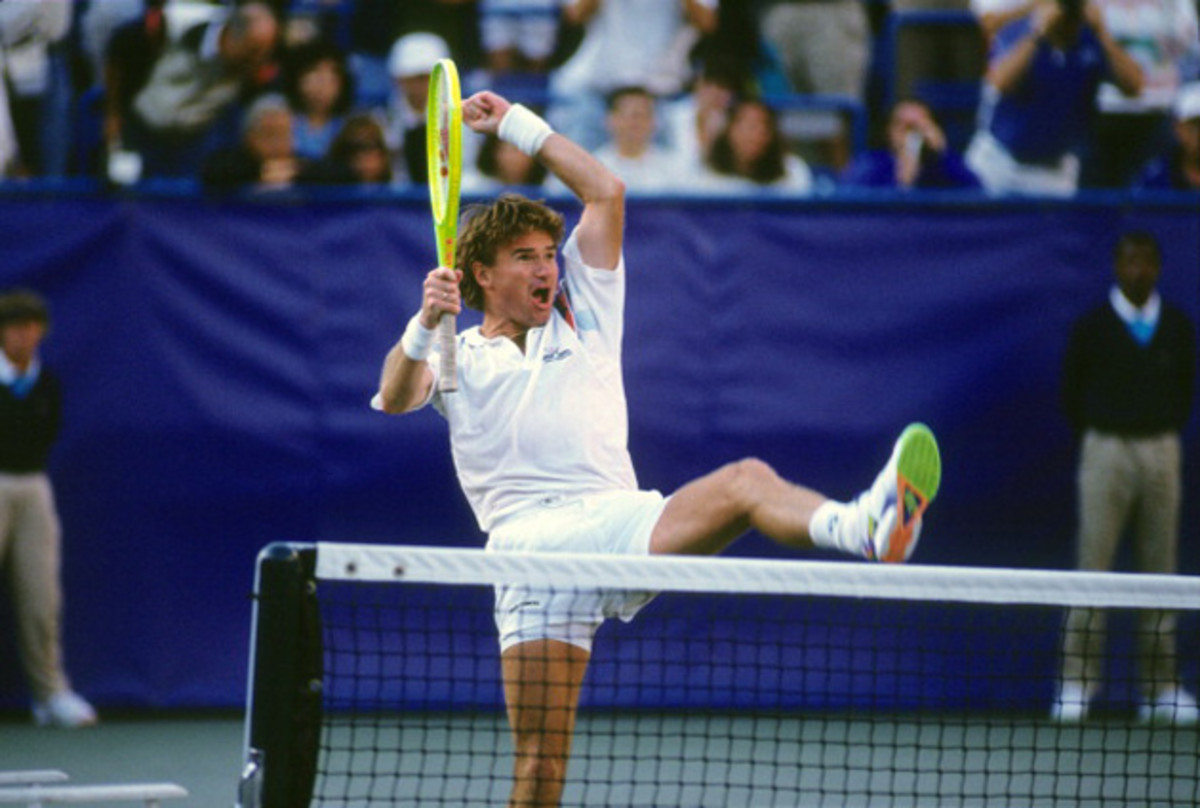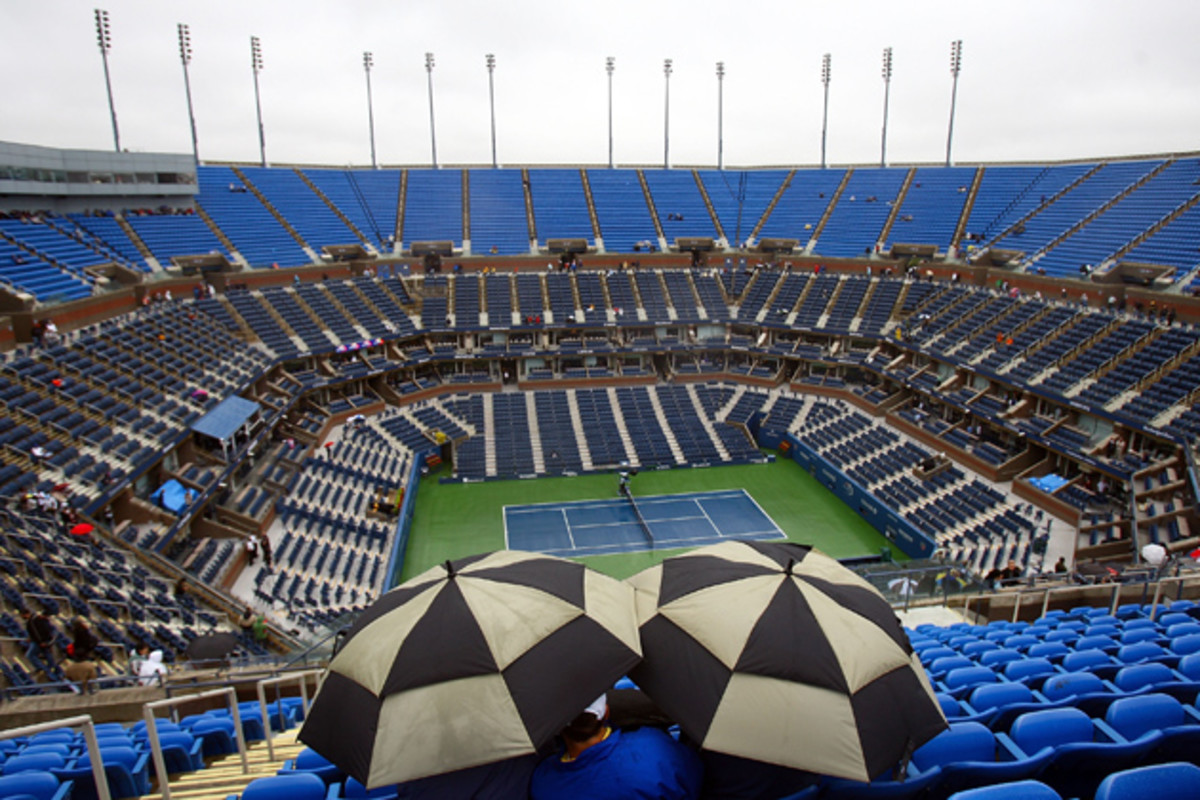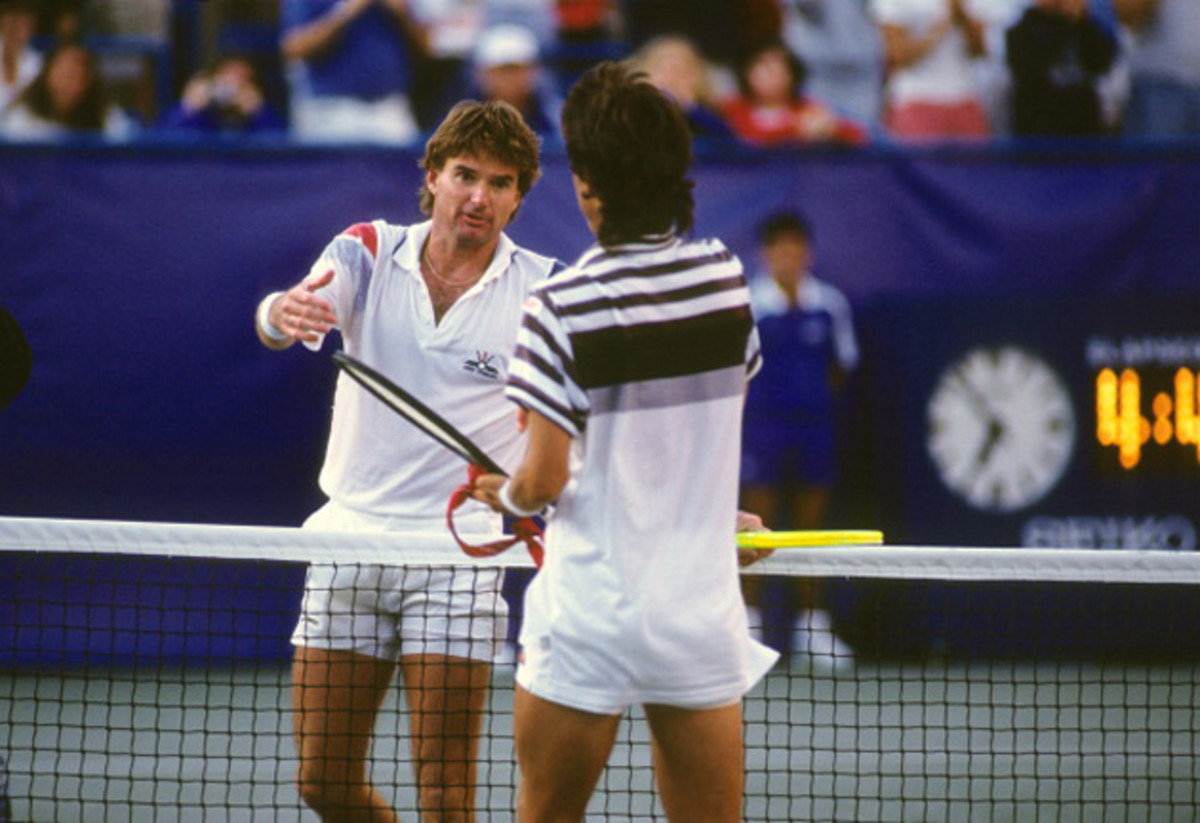For Krickstein family, U.S. Open rain delays bring renewed heartbreak

NEW YORK – During the U.S. Open, my family dreads nothing more than rain. Nobody watching the U.S. Open on television wants a rain delay, but for my family, the weather in Flushing determines whether we’ll be enjoying a pleasant afternoon of matches or reliving a tennis nightmare.
This is what it’s like to watch the U.S. Open as a Krickstein.
Even if you weren’t watching on Sept. 2, 1991, you know what happened when Jimmy Connors met Aaron Krickstein on Labor Day that year if you’ve sat through any U.S. Open rain delay over the last 24 years. On Connors’s 39th birthday, he came back to defeat Krickstein 3–6, 7–6(8), 1–6, 6–3, 7–6(4) in the U.S. Open fourth round in front of a raucous, pro-Connors crowd. Krickstein, who was 24 at the time of the match, held a 5-2 lead in the fifth set before Connors roared back. Fans sang “Happy Birthday” to the five-time Open champion after his victory. I wasn’t there, but I doubt my family joined the chorus.
Farewell to the Grandstand court: U.S. Open fan favorite will be replaced
The match was an instant classic, but it took on a second life courtesy of CBS. Until CBS lost U.S. Open broadcast rights this year, the network would show Connors-Krickstein during rain delays without fail. (Apparently ESPN can still theoretically show the match.) Nothing has been able to supplant Connors-Krickstein as the go-to rain delay programming: Not Andre Agassi’s five-set marathon win over James Blake in 2005, nor Pete Sampras’s five-set quarterfinals win over Agassi in 2001. Somebody at CBS clearly loved Connors or experienced high levels of Krickstein-related schadenfreude.
Despite knowing exactly what’s in store for Aaron, who is my mom’s brother, we have found ourselves unable to look away.
“It’s weirdly compelling,” Aaron’s sister Rachel, my aunt, said. “Like a trainwreck.”
But no matter how many times the match is shown during rain delays, Connors always comes back to beat Krickstein.
“We always knew the outcome and the outcome was always the same, which was frustrating,” Aaron’s father Herb, my grandfather, said.
Added his mother Evelyn, my grandmother: “I wish he would win one of them.”

Changing the channel might seem logical, but considering my grandfather has subjected himself to watching the Detroit Lions for the last 60 years, it’s clear that looking away isn’t something we do well. Even turning off the television isn’t an escape: Whenever Krickstein and Connors take the court during a rain delay, calls and texts ensue: I’m watching your brother play! The match is on again! I can’t believe they’re showing it again. I wish the ending could change this time! I hate watching.
Once, at a Bruce Springsteen concert, Krickstein was in the bathroom when a man approached him.
“Tough match yesterday,” the man said. “I thought you had it.”
The man was referring, of course, to Krickstein’s match with Connors, which had taken place more than 10 years prior.
The match has become iconic for both players. For Connors, it was the signature victory of a magnificent run at the 1991 U.S. Open, culminating in a semifinals defeat to Jim Courier. Connors, a 12-time Grand Slam champion, toldThe Wall Street Journal in February that his ’91 run in Flushing marked the “best 11 days of my career.”
Ageless Roger Federer is in peak form, looks primed for sixth U.S. Open title
Krickstein, who reached a career-high No. 6 ranking and beat many of the best players of his generation, is perhaps best known for his loss to Connors.
In the first few years after the match, the outcome still stung Krickstein. The endless re-runs, as if it were an episode of Seinfeld, only rubbed salt in the wound. Krickstein remained on tour, and he viewed the match as an opportunity he had let slip away. He still felt capable of winning a Grand Slam title after reaching the U.S. Open semifinals in 1989. But it quickly became clear that he wouldn’t be able to escape his infamous defeat.
“It seemed to rain every year after this match for whatever reason,” Krickstein said.
Uncle Aaron and I met Wednesday night at a restaurant inside Arthur Ashe Stadium, just a few hours after the first rain delay of the 2015 tournament. I pointed out that with the Open moving completely to ESPN and Ashe’s retractable roof set to be completed by next year’s tournament, he was finally off the hook. But he wasn’t as relieved as I expected.
“It’s kind of sad that CBS is gone because you probably won’t see it,” he said. “My son Joseph [who is six years old], he won’t remember really or get to see when I’m on. I remember he saw it once when he was little, and he was like, ‘That’s you, Daddy?’ I can throw in a VCR or whatever, but for it to actually be on live TV is cool when you’re watching the actual U.S. Open.”
Krickstein has taken a different outlook on the match in recent years. The initial wound of defeat has healed. Even though its ubiquity annoyed him for a while, he eventually came to enjoy his association with one of the most famous tennis matches of all-time. When he stumbles upon a replay, he still thinks about how he could have approached the match differently from a tactical standpoint, but he’s come to terms with his role in what is likely the most widely viewed U.S. Open match ever.

“It certainly wasn’t the greatest quality tennis match ever played by a long shot. There’s so many great tennis matches over the years with great champions. Yet that match has been played more on TV and is more famous than probably any match other than maybe Borg–McEnroe at Wimbledon in 1980,” Krickstein says. “So it’s kind of cool to be associated with someone like Jimmy Connors, a great champion like him, and play a match like that at the Open, even though I lost.”
I asked my uncle what he does when the match inevitably hijacks his television during a rain delay.
“Well, I’m certainly not sticking around to watch it,” he said, smiling. “But I don’t pout, I don’t walk out the door. I accept it, and I think it’s kind of cool. I was on TV today. At a tournament that I love to play in against one of the greatest players of all-time. Is that really that bad?”
Even for the rest of our family, the match isn’t complete agony. Aaron’s sister Renée, my mom, was among the Kricksteins in attendance on Labor Day in 1991. She still gets emotionally invested when she sees replays of the match, and the outcome never ceases to disappoint. But I was surprised when she told me why she still watches.
“It’s crazy, but it’s fun to watch every time,” she said.
Fun? Acceptance may be the fifth stage of grief, but fun certainly isn’t the sixth. How could she possibly derive pleasure from watching her brother’s gut-wrenching loss?
Serena's difficult win over Venus revealed her need for the Grand Slam
“It’s more nerve-wracking than fun,” she said, pausing. “But I guess it’s exciting. It was exciting to be there. I’m still rooting for him to win every time.”
My grandfather feels the same way.
“From our point of view, it’s sort of fun to re-live it, to watch it every year on television. We never turned the television off when it came on because it was exciting to watch it all to see the reaction of the fans,” he told me. “Of course I basically have every point memorized since I’ve seen it so much.”
The match might be a semi-torturous meme of the U.S. Open, but for a couple hours—or however long the rain lasts—Aaron is a professional tennis player again. And while so many casual tennis fans remember him best for his crushing defeat to Connors, seeing him on the court again recalls other moments from his career. His first title at age 16 in Tel Aviv. His five-set fourth round victory over No. 3 Stefan Edberg in the 1988 U.S. Open. His 10 comebacks from down two sets to love, tied for an Open Era record. His semifinal appearances at the 1989 U.S. Open and 1995 Australian Open.
But Krickstein recognizes that his match against Connors will outlive his other accomplishments. And for that he can offer some thanks to U.S. Open rain delays.

“Certainly if CBS never showed it or only showed it once, it would have had its day, but you would forget about it just like everything,” Krickstein said. “But because they kept showing it year after year it stayed in people’s minds forever. So anyone in this era who’s been around the last 25 years of tennis knows Connors–Krickstein.
“It’s kept me in the limelight, that’s for sure.”
The match is part of U.S. Open lore, but it’s also become a sort of inside joke among tennis junkies—a cruel joke for the Kricksteins, but something we laugh about, even if some of us find ourselves pulling for a different outcome. Another rain delay? Quick, somebody tell Connors and Krickstein to warm up! This could be the year Aaron finally gets him!
In 2013, an ESPN 30 for 30 documentary about Connors’s run at the 1991 U.S. Open revealed that Connors and Krickstein, who had been good friends before the match, hadn’t spoken since. But they renewed their friendship, and earlier this year they played an exhibition at the Boca Raton, Fla., country club where Krickstein serves as director of tennis. Krickstein won, 8-5 in a pro set.
If ESPN needs something to show during future U.S. Open rain delays, I have a match in mind.
